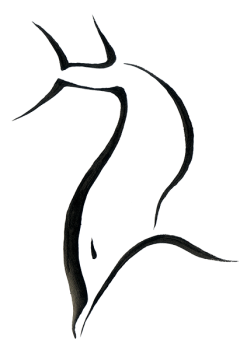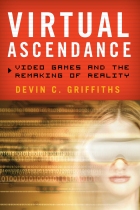
Kata Project logo
Stroke. The word is enough to drive fear deep into the stoutest of hearts. They strike with little or no warning, and without rapid and adept medical attention, they can be fatal. For survivors, recovery is by no means certain: about half come through the experience permanently disabled—debilitated and dependent, cutoff from bodies they can no longer control. Every year, nearly 800,000 people in the United States fall victim to stroke’s crushing hammer, their lives often irreparably altered.
Sadly, the standard approach to stroke therapy offers little hope. It’s rooted in the science of centuries past, is driven by economics, and at best is often too little, too late. The current model—an hour each of speech, physical, and occupational therapies per session—is 150 years old, says Justin McArthur, director of the Department of Neurology at Johns Hopkins University, and “not adequate or up to today’s scientific knowledge.”
Dr. John Krakauer, professor of neurology and neuroscience at Hopkins, is less diplomatic. He has only one word for the contemporary state of stroke rehabilitation therapy: medieval.
If you have a stroke in the United States,” he says, “you’re better off if you’re a rodent than if you’re a human being.”
In his eyes, it’s high time for a revolution. And he knows just the dolphin to lead it.
Dr. Krakauer has a reputation for challenging the status quo—and ruffling not a few feathers in the process. He came to Johns Hopkins in 2010, and immediately began recruiting for a bleeding-edge stroke recovery research center, taking a wrecking ball to the traditional staffing model. Krakauer’s BLAM lab (brain, learning, animation, and movement) includes robotics and software engineers, an animator, a computer scientist, and, as consultants, an animal intelligence expert and the director of animal programs at the National Aquarium in Baltimore. Together, they form the brain powering BLAM lab’s Kata Project, whose mission is to create computer games for post-stroke rehab and neurological research. But the heart and soul of the project is a dolphin named Bandit.
Bandit’s no ordinary marine mammal: he’s a digital amalgam of three of the National Aquarium’s bottlenose dolphins, with a pinch of spinner dolphin for spice. The team spent countless hours studying the animals, distilled their research into the essence of dolphin-ness, translated that into digital form, and gave virtual birth to Bandit—a cybernetic dolphin that moves with the grace and fluidity of the real thing. A user (ideally, a post-stroke patient) controls Bandit on a screen, via movement of his or her arm placed in a robotic sling. For all intents and purposes, the player becomes Bandit. Omar Ahmad, director of the Kata Project, describes the effect as being “jacked into the creature.”
It’s visceral feedback; every subtle movement you do is reflected in the dolphin.”
But why go to all this trouble? Why create such a hyper-realistic, detailed virtual creature in the first place? Because movement—early and often—is key to recovering from a stroke, and taking on the role of a beautiful aquatic mammal is far more engaging and fun than anything conventional physical therapy has to offer. According to Krakauer, there’s no reason why the PT environment has to be bleak and depressing.
Why shouldn’t a hospital be more like a gaming arcade? Why can’t it be a place where you want to explore and play?”
He makes a valid point, but the idea of using games for therapy is not exactly groundbreaking. Physicians and therapists have turned to the Nintendo Wii to aid in stroke recovery for years. Others, like Yale University’s Dr. Adam Noah, have noted the ability of Dance Dance Revolution and other so-called exergames to reduce symptoms of Parkinson’s disease (and they may even help repair damaged areas of the brain). And senior centers and assisted living facilities often have the Wii on hand so that residents can get up and moving, and stay active with something that’s both enjoyable and accessible (I’ve covered this in previous blog posts, as well as in my book, Virtual Ascendance: Video Games and the Remaking of Reality).
What’s new with Krakauer’s team is their intent, their focus. Bandit is the first virtual creature designed to help stroke patients get better (of course, he’ll have many other uses, but that’s his original purpose). And the BLAM lab is the first medical research facility dedicated to the idea of creating computer and video games specifically for physical therapy (as opposed to adapting off-the-shelf games to the task).
But more than that, it’s Bandit himself. He is delightful and engaging, and he responds so intuitively to the motions of the person controlling him that it effectively erases the line between player and object: you become him, and you can’t help but get caught up in his gracefulness, his antics, and his sheer joy at simply being alive. Stroke rehabilitation can be a lonely and forbidding process. For those setting out on this journey, slipping into Bandit’s skin and moving through his watery world—creating a deeply emotional connection to a creature whose every movement is the paragon of grace—may be the beacon guiding them down the long, hard road to recovery.
You can read more about Dr. Krakauer’s research in the National Geographic article here.
To watch a video of Bandit in action, check out this link.
You can learn more about the Kata Project here.
Krakauer’s team is also developing an iOS game based on Bandit called I Am Dolphin. You can read about it here.
And there are two more articles about video games and stroke therapy here…
… and here.
